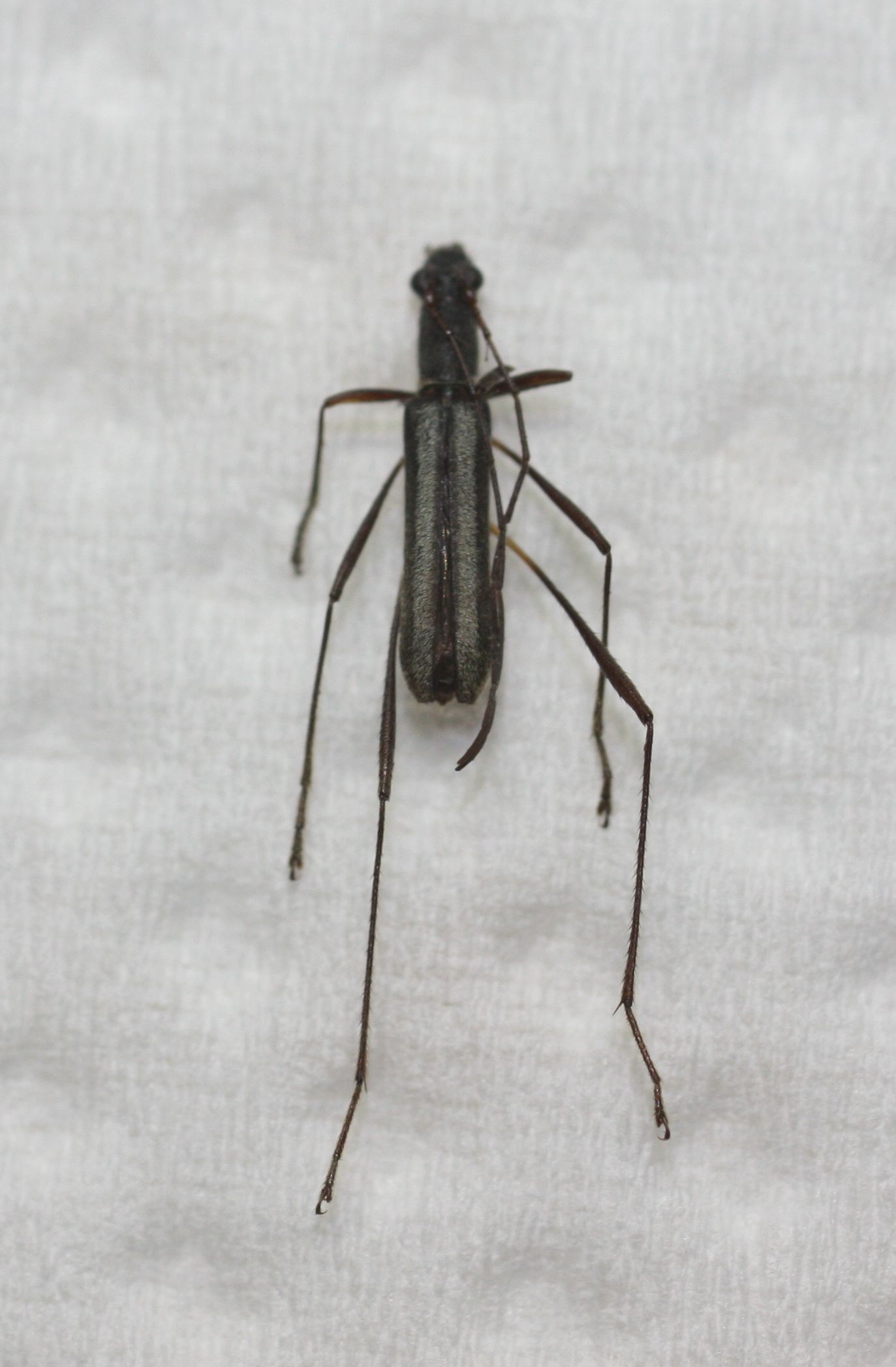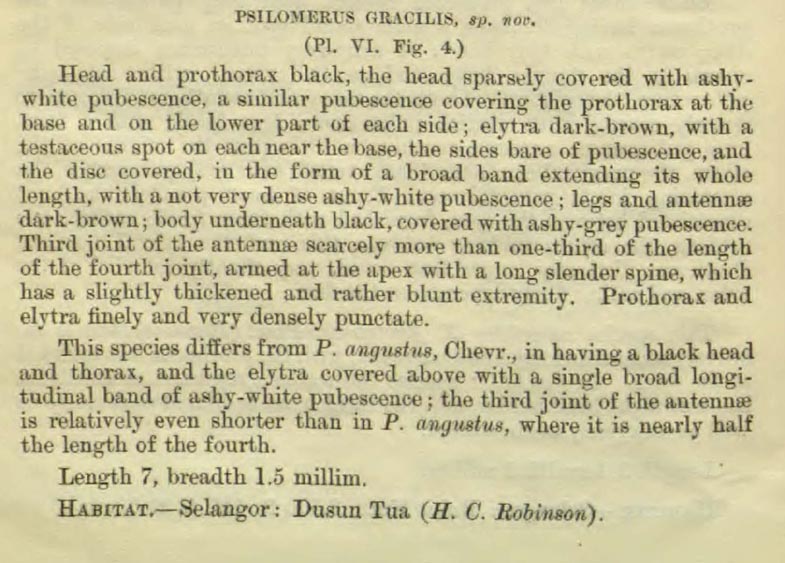| Author |
 Topic Topic  |
|
|
dpotanin
Member Purpuricenus
 
Russia
186 Posts |
 Posted - 21/11/2013 : 22:26:44 Posted - 21/11/2013 : 22:26:44



|

198.87 KB
Cameron Highlands, Malaysia
10-12 mm
?Raphuma sp. |
Edited by - Xavier on 30/01/2016 19:58:21 |
|
|
Beckey
Member Rosalia
  
Japan
553 Posts |
 Posted - 22/11/2013 : 15:15:38 Posted - 22/11/2013 : 15:15:38



|
| It belongs to the genus Psilomerus. |
 |
|
|
Xavier
Scientific Collaborator
    
France
12220 Posts |
 Posted - 22/11/2013 : 17:41:51 Posted - 22/11/2013 : 17:41:51



|
Could it be this one ?
Picture and text from GAHAN, 1906. On a Collection of Longicorn Coleoptera from Selangor and Perak
  |
 |
|
|
horshehden
Member Purpuricenus
 
Czech Republic
424 Posts |
 Posted - 01/06/2014 : 20:03:47 Posted - 01/06/2014 : 20:03:47



|
Well, I have a specimens from Cameron High. (which I determined as P. gracilis) and features of both specimens agree.
Note, that the holotype from Selangor located in London has slightly different colour of legs, however, it can be just the age effect.
Another specimen located next to it seems to be identical with mine (as well as the one above). |
 |
|
|
Xavier
Scientific Collaborator
    
France
12220 Posts |
 Posted - 06/12/2014 : 15:10:16 Posted - 06/12/2014 : 15:10:16



|
I have just seen the type picture of Psilomerus simplex Aurivillius, 1924 on Smithsonian website and it's closer to your specimen.
Here |
Edited by - Xavier on 06/12/2014 16:49:05 |
 |
|
|
dryobius
Member Rosenbergia
   
USA
1887 Posts |
 Posted - 06/12/2014 : 17:53:25 Posted - 06/12/2014 : 17:53:25



|
Psilomerus are going to be a difficult taxonomic problem. I have 24 Psilomerus just from Sabah and there could easily be 10 to 12 species.
Five of them are:
Psilomerus albifrons Aurivillius, 1924 (probably correctly identified)
Psilomerus danieli Dauber, 2010 (holotype)
Psilomerus rubricollis Dauber, 2006 (holotype)
Psilomerus rufescens Dauber, 2006 (probably correctly identified)
Psilomerus sarawakensis Dauber, 2010 (holotype)
The remaining specimens can be allocated to 5, 6 or 7 species, and there may be some sexual dimorphism. Three of these species are very distinct. So, the other specimens show variation in the white pubescence at the base of the pronotum, or variation in the white longitudinal pubescence on the pronotum, the color of the basal half of the femora, and if that wasn't enough, they show variation in the amount and color of pubescence on the elytra. Only one of these species is common, and I had incorrectly called it P. gracilis (based on a specimen identified by Dauber). Xavier believes it to be P. simplex (type locality is Sandakan, Borneo), based on a specimen sent to him for study.
This is all too frequent of a problem with Oriental species. There is not enough material in series to see variations, the type specimen is old and faded or not even available for study, and lastly.... these species are still evolving.
|
 |
|
|
Xavier
Scientific Collaborator
    
France
12220 Posts |
 Posted - 06/12/2014 : 18:16:58 Posted - 06/12/2014 : 18:16:58



|

I just said "it's closer to", I show the link to the type and I put a ? after the title of this post. Clearly I affirm nothing !
The Psilomerus you sent me is the first I see of my life, thanks for that, but I'm surely not a specialist of this group. |
Edited by - Xavier on 06/12/2014 18:35:35 |
 |
|
| |
 Topic Topic  |
|


